Understanding Wing Boards in Kiteboarding
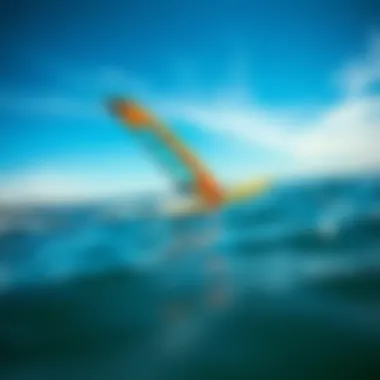
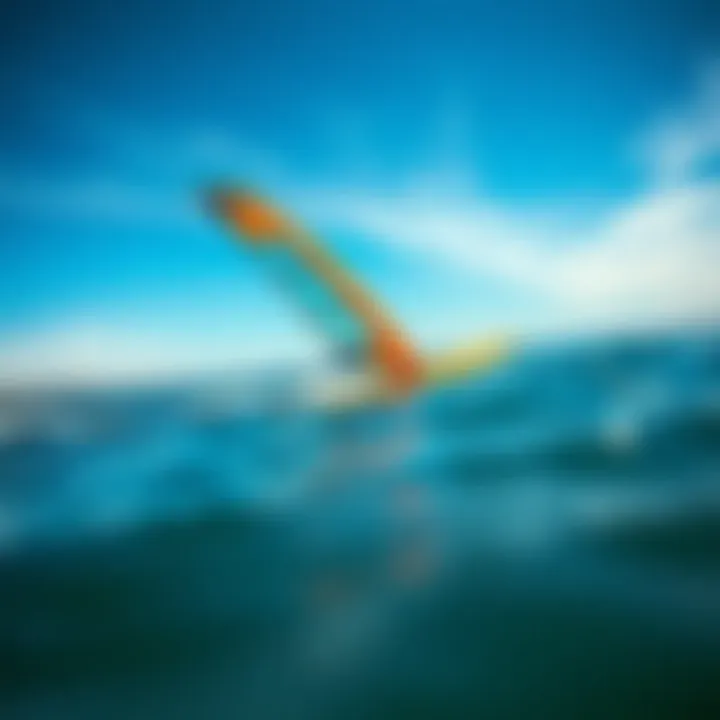
Intro
In the thrilling realm of kiteboarding, innovation knows no bounds. One of the emerging stars in this space is the wing board. Not too long ago, the notion of combining a wing with a board for riding on water might have seemed like a wild dream to some. Yet, here we are, witnessing a blend of technology and outdoor adventure that is capturing the hearts of sports enthusiasts everywhere. The evolution of water sports, especially kiteboarding, has led to the development of wings not just as a novelty but as a serious piece of equipment that can alter the kiteboarding experience significantly.
From adrenaline-seeking beginners to seasoned riders looking to up their game, understanding what wing boards bring to the table is essential. In this piece, we’ll peel back the layers on wing boards, examining not just how they work, but also the advantages and hurdles that come with using them. Plus, we'll dig into key safety tips and maintenance concerns. So tune up your board and hit the surf as we ride the waves of knowledge on wing boards in kiteboarding.
Intro to Wing Boards
Wing boards represent a recent evolution in the kiteboarding domain, merging elements from traditional wind sports with modern technology. Understanding wing boards is crucial for both newcomers and seasoned riders, as they open up new horizons for exploration on the water. The allure of wing boards lies not only in their unique design but also in their versatility, allowing each rider to express their style while improving performance across varied conditions.
One cannot overlook the benefits these boards offer. For instance, they have been known to enhance speed due to their hydrodynamic shapes, making them a popular choice among thrill-seekers. Furthermore, they cater to a variety of skill levels, from beginners learning the ropes to advanced kiteboarders looking for a new way to challenge themselves. Understanding the intricacies of wing boards equips riders with the knowledge to maximize their experiences on the water, combining safety with enjoyment.
When discussing wing boards, one must consider how they differ from other board types. The unique features—like their distinct wing shapes and sizes—are not just for aesthetic appeal. These elements critically influence performance, maneuverability, and how the wind interacts with the rider.
As we delve deeper into this article, we will uncover these specific elements, addressing their historical context, mechanics, advantages, challenges, and safety considerations related to wing boards. The aim is to examine this fascinating topic thoroughly, promising valuable insights for kiteboarding enthusiasts of all levels.
How Wing Boards Function
Understanding how wing boards function is crucial for anyone delving into kiteboarding, offering vital insights that can enhance performance and enjoyment. This section will break down the fundamental dynamics that govern wing boards, covering everything from their mechanics and design to their interaction with kites. By grasping how these elements work, enthusiasts can make informed decisions and ultimately elevate their kiteboarding experience.
The Mechanics of Wing Boards
Wing boards are designed to harness the power of wind effectively. At their core, these boards utilize hydrodynamic principles similar to those seen in aviation. When a rider leans forward, the angles of the board relative to the water changes, promoting lift. This lift, created by the wing profile, allows the board to glide smoothly, reducing drag while maximizing speed.
Components like the mast and fuselage play a significant role in stabilizing the board and ensuring that it does not flip over at high speeds. The wing itself, often made from lightweight materials, floats on the water while also catching the wind. A rider's weight shifts can impact not just speed, but also maneuverability — forcing the rider to develop a sensitivity in balancing that is both an art and a science. Essentially, mastering the mechanics is like learning to dance on the water; it requires practice, intuition, and finesse.
Wing Profiles and Their Impact on Performance
The shape and design of the wing profile significantly influence performance. Different wing profiles cater to various levels of experience and riding styles.
- Flat Wings: These tend to provide a low lift at lower speeds, making them ideal for beginner riders who are still learning the ropes. They offer greater stability and easier control.
- Curved Wings: More experienced riders often opt for these, as they generate more lift and can reach higher speeds. However, they require a greater level of skill to control effectively.
- Hybrid Designs: These blend elements from both flat and curved designs, giving a balance of lift and stability, perfect for versatile riders who venture in assorted conditions.
The choice of wing profile can make or break one's enjoyment on the water, as each design carries unique advantages and challenges. The beauty of this equipment lies in finding a profile that resonates with your style, keeping in mind considerations like water conditions and wind variations.
Kite Interaction and Control
The interaction between the kite and the wing board can greatly affect control and performance. An optimal kite can amplify the advantages of a wing board, but a mismatch can lead to challenges. The kites used in conjunction with wing boards often share characteristics that promote better lift and handling. Here are some key points to consider:
- Line Length: Longer lines can give riders more freedom and range, allowing the kite to catch more wind. However, they can also make it challenging to regain direct control during sudden movements.
- Kite Size: The size of the kite directly correlates with its pulling power. A rider needs to match kite size with wind speed and their level of experience to maintain an agile yet manageable flight.
- Control Bar Settings: Adjusting the control bar can change how the rider interacts with both the kite and the board. Learning to fine-tune these elements according to conditions is essential for safe and effective riding.
By understanding the nuances of kite behavior and board dynamics, users can ensure a smoother and more responsive experience on the water. The relationship between the kite and the wing board mustn’t be underestimated — a well-synergized duo can yield exhilarating rides and unforgettable adventures.
"A good kite and a responsive wing board can transform an ordinary day into an extraordinary experience on the water."
In summary, recognizing how wing boards function — including their mechanics, wing profiles, and interaction with kites — is key for anyone involved in kiteboarding. This knowledge arms riders with the insights needed to optimize their riding experience, whether they are beginners discovering waves or seasoned pros catching air.
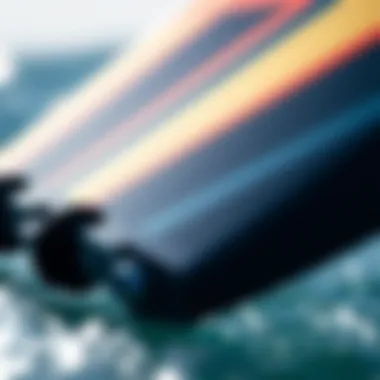
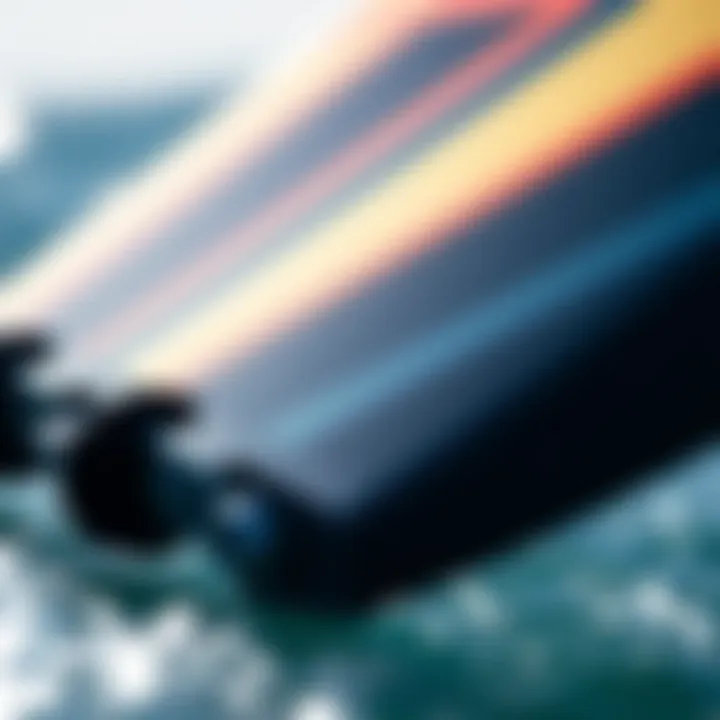
Advantages of Using Wing Boards
Wing boards have become a game-changer in the kiteboarding realm, bringing a suite of benefits that have riders clamoring to give them a try. These advantages not only enhance the overall experience on the water but also open up a realm of opportunities that some might find hard to resist. Let's take a closer look at the key benefits, each having unique implications for both novice and experienced kiteboarders alike.
Enhanced Maneuverability and Speed
One of the standout features of wing boards is their unmatched maneuverability. Picture this: you’re zooming across the water and suddenly need to navigate around a tight obstacle or perform a quick turn. The design of wing boards allows for agile movements, providing the rider with excellent control. The shape and size of the wings play a crucial role here; they boost lift and facilitate easy changes in direction, almost like an elegant dance on water.
Moreover, the increased lift translates into greater speed. Riders can efficiently harness wind power, adding a thrilling rush to the ride. This is particularly beneficial in light wind conditions, where traditional boards may struggle. As the saying goes, "The wind is at your back, but your skills will take you the rest of the way."
"With every turn and wave, the freedom of riding a wing board feels like untethered creativity."
Increased Versatility in Various Conditions
Wing boards aren't just about the excitement; they also boast impressive versatility in different wind and water conditions. Whether you find yourself cruising on flat lakes, tackling choppy sea states, or even trying your luck with waves, wing boards are adaptable. The balance between lift and stability makes them suitable across a broad spectrum of environments.
Additionally, if the wind picks up or drops unexpectedly, the wing board allows riders to adjust effortlessly. Riders can maintain performance across varying conditions without the constant need to swap gear. This adaptability can make the difference between an enjoyable day on the water or one filled with frustration. It’s like having a multi-tool in your kit — one board, many possibilities.
Compatibility with Different Boards
Another remarkable advantage of wing boards is their compatibility with different types of kiteboarding setups. Most wing boards can integrate seamlessly with various board styles and sizes, whether it’s a surfboard, a foil board, or a regular kiteboard. This means that kiteboarders won’t have to invest in completely new setups to use wing boards; instead, they can enhance their existing equipment.
The combination of wing components with different boards can yield unique experiences tailored to the rider's preference. For instance, using a surfboard-style wing board can provide a more dynamic ride in small waves, while a foiling setup will take you to new heights in speed. Thus, the compatibility of wing boards brings about a level of customization that can elevate an individual’s riding experience.
In summary, the advantages of using wing boards are hard to overlook. From enhanced maneuverability and speed to remarkable versatility in different conditions and compatibility with various boards, there’s much to explore. These benefits not only improve the overall experience but also heighten the thrill that kiteboarding delivers. As more riders recognize these perks, it's evident that wing boards are becoming an essential part of the kiteboarding landscape.
Challenges and Limitations
While wing boards have gained traction in the kiteboarding community, they come with their unique sets of challenges and limitations that enthusiasts must navigate. Fully understanding these challenges can better prepare users for what to expect, ultimately enhancing their experience and performance on the water. Here we will explore the learning curve associated with wing boards, the physical demands they place on riders, and the influence of weather and wind conditions.
Learning Curve for New Users
For newcomers to kiteboarding, mastering wing boards isn't just a walk in the park. The transition from traditional kite setups to wing boards requires a certain level of skill and familiarity with the equipment. The initial trifecta of keeping balance, controlling speed, and maneuvering through the water can feel overwhelming. Many beginners find themselves struggling to maintain stability, especially since wing boards respond differently than typical kiteboards. Unlike the latter, which are often more forgiving, wing boards require precise shifts in weight and attention to board angle for effective riding.
While some kiteboarders may pick it up quickly, for others, it might take several sessions before feeling comfortable. There’s a common adage in the water sports community: "Practice makes permanent." This highlights the importance of persistent practice for solidifying skills. Moreover, rather than diving in headfirst, new users might consider taking lessons or joining a community group, which can offer valuable guidance and shared experiences. Experienced riders often recommend having mentors or coaches available, as they can provide insights that written guides simply cannot cover.
Physical Demands and Fatigue
One cannot ignore the physical toll that wing boarding imposes on riders. Unlike traditional kiteboarding, which allows for some rest periods while the kite hovers, wing boarding demands continuous engagement of core muscles for balance and control. This means that endurance becomes just as important as technique. Once a rider takes flight, maintaining stance and coordination requires more energy and agility.
Additionally, fatigue can set in faster due to the constant adjustments riders must make based on variable conditions and their personal energy levels. The muscles involved in wing boarding are often under a different kind of strain compared to other activities, such as surfing or snowboarding. As a result, muscle soreness can be common, particularly for those who are not accustomed to using those specific muscle groups extensively.
To mitigate fatigue, riders should incorporate fitness routines focused on core strength, flexibility, and cardiovascular endurance. Additionally, it’s beneficial to take breaks when practicing to avoid overexertion. Some seasoned riders suggest that knowing one's limits is crucial; respecting the body's signals can make the difference between a day filled with fun or avoiding discomfort.
Weather and Wind Considerations
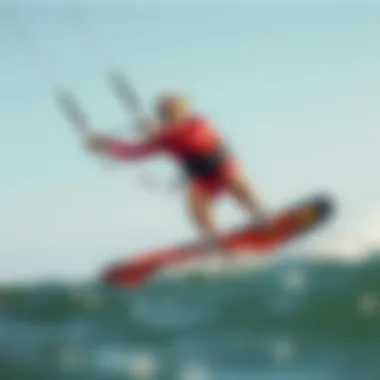
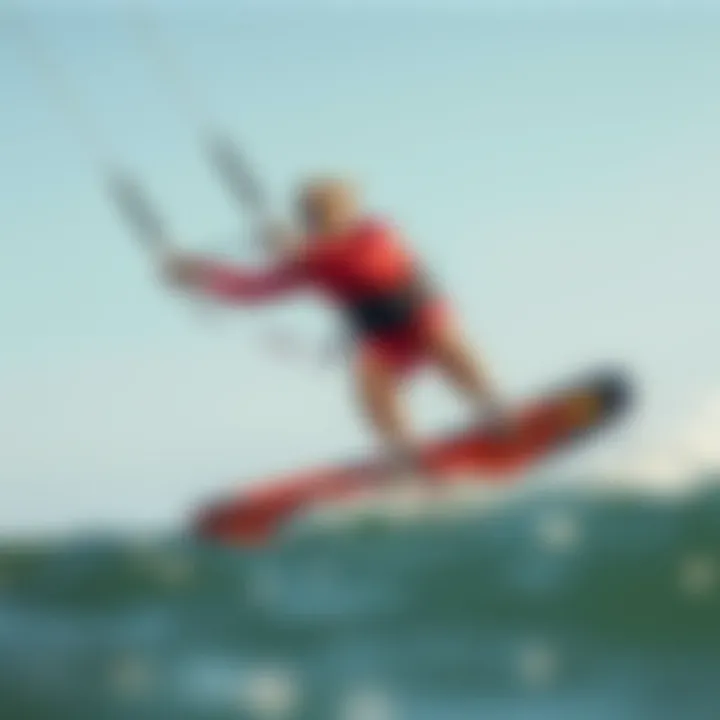
Weather conditions have a substantial impact on the wing boarding experience. Each session requires keen awareness of wind speed and direction. Wing boards are very responsive, and not understanding the wind can lead to disaster—whether it’s losing control in high gusts or struggling to get off the water in lighter winds.
The best surfers know how to read the wind and adapt their techniques accordingly. It’s essential to realize that not every wind condition is suitable for a session. For instance, going out in strong onshore winds can lead to crashes, while offshore winds may make it difficult to return to the shore. To avoid potential hazards, riders should always keep an eye on local weather forecasts and learn to interpret wind patterns.
In summary, careful consideration of weather forecasts and real-time wind conditions can save riders from difficult and potentially dangerous situations. Understanding these elements is crucial, as sound judgment will lead to safer and more enjoyable riding experiences on the water.
"Success in kiteboarding often hinges on the ability to adapt effectively to changing circumstances, whether they're in the water or beyond."
The End
Navigating the challenges and limitations of wing boards is integral to mastering the sport. Recognizing the steep learning curve, the physical demands placed on riders, and the flux of weather conditions enables enthusiasts to approach wing boarding with the foresight needed for safer and more enjoyable sessions. By developing a clear understanding of these aspects, kiteboarders can truly appreciate the thrill and excitement these innovative boards offer.
Maintenance and Care for Wing Boards
When it comes to wing boards, treating them right is like giving your trusty steed a good brush after a long ride. The health of your gear is vital not just for performance but also for your safety. Proper maintenance ensures that your wing board remains functional and delightful, extending its lifespan and enhancing your time on the water. Ignoring the necessary care can lead to performance hiccups and, in worst cases, equipment failures.
Routine Checks and Servicing
Regular checks on your wing board shouldn’t feel like a chore but rather a crucial part of your kiteboarding routine. Keeping up with routine servicing helps catch any potential issues before they become problems. Pay attention to the following:
- Inspection of the Wing: Check for punctures or tears. Even small rips can balloon into larger issues if water gets in. If you spot any damage, it's wise to repair it quickly with specialized adhesive or to consult a professional.
- Foil and Board Condition: Look for signs of corrosion or dents on the foil. Ensure that the connections between the foil and the board are secure.
- Straps and Fins: Inspect straps for wear and tear, making sure they’re tight and secure. Don’t overlook the fins; ensure they’re not cracked or chipped as they affect your guidance and control.
- Pump and Inflation: For inflatable wings, regular pressure checks are key. Just as you'd check your car tires, proper inflation can heavily influence your performance.
Performing these checks every couple of outings might save you from potential mishaps later on. In the long run, routine checks can prove invaluable to maintain the integrity of your wing board
Proper Storage Techniques
Proper storage isn’t just about sliding the board under your bed; it’s an art in itself. Just as a gardener tends to their plants, you must nurture your equipment to ensure it thrives. Adopting sound storage techniques can help mitigate wear and keep your gear in stellar shape for longer.
- Dry and Cool Spaces: Store your wing board in a cool, dry place away from harsh sunlight and extreme temperatures. Heat can weaken materials over time, so avoid leaving it in the trunk of your car or in direct sunlight.
- Use a Bag: If you've got a storage bag, use it! It acts not just as a protective layer against scratches, but also keeps moisture and dust at bay.
- Avoid Pressure: Store your wings flat or, if vertical, ensure they aren't compressed. If pressure is applied to the wings, it can alter their shape or lead to irreparable damage.
- Regular Airing Out: Just as you wouldn’t like to be cooped up, your wing board doesn’t either. Once in a while, take it out and air it out to prevent any unwanted odors or mildew.
By blending these maintenance tips with thoughtful storage techniques, you’ll find that your wing board performs better and lasts longer. Remember, a little attention goes a long way in being prepared for those thrilling rides out on the water. If you're keen to dive deeper into the world of maintenance and hone your skills, seek out additional resources from seasoned kiteboarders on platforms like Reddit or Kiteforum.
"Treat your gear well, and it will treat you well in return."
Whether you're an eager novice or a seasoned rider, giving your wing board the best care could enhance your overall kiteboarding experience.
Safety Considerations When Using Wing Boards
Safety is a critical factor in any sport, and kiteboarding is no exception. The complexity and dynamism of wing boards introduce various scenarios where safety gear and best practices play a pivotal role. Such awareness not only enhances your riding experience but also minimizes the risks associated with this thrilling sport. Selecting the right safety gear and adhering to established practices can be the difference between a fun outing and a potentially dangerous situation on the water.
Essential Safety Gear
When you’re gearing up for a session on your wing board, the right safety equipment should be top of mind. Wearing appropriate gear protects you against accidents and enhances overall performance. Here are some essential items:
- Personal Flotation Device (PFD): This device can save your life. It keeps you afloat in the water, which is crucial if you find yourself in a tricky spot. Choose a PFD that is specifically designed for kiteboarding, allowing maximum freedom of movement.
- Helmet: A good helmet protects your head from impacts caused by falls, board collisions, or even mishaps with the kite. Look for models designed for water sports that provide ample buoyancy as well as protection.
- Impact Vest: This item provides cushioning for your torso and ribs. It’s not a flotation device but can protect against impacts while still allowing you to move freely.
- Wetsuit or Drysuit: Depending on the water temperature, staying warm is essential. A wetsuit will keep you insulated. A drysuit is a better option for very cold conditions, as it seals out water entirely.
- Footwear: Specialized kiteboarding shoes or boots secure your stance on the board, protecting your feet from sharp debris or water rash during your ride.
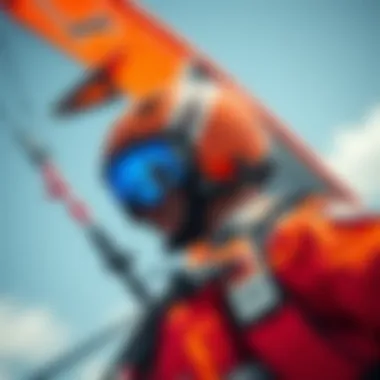
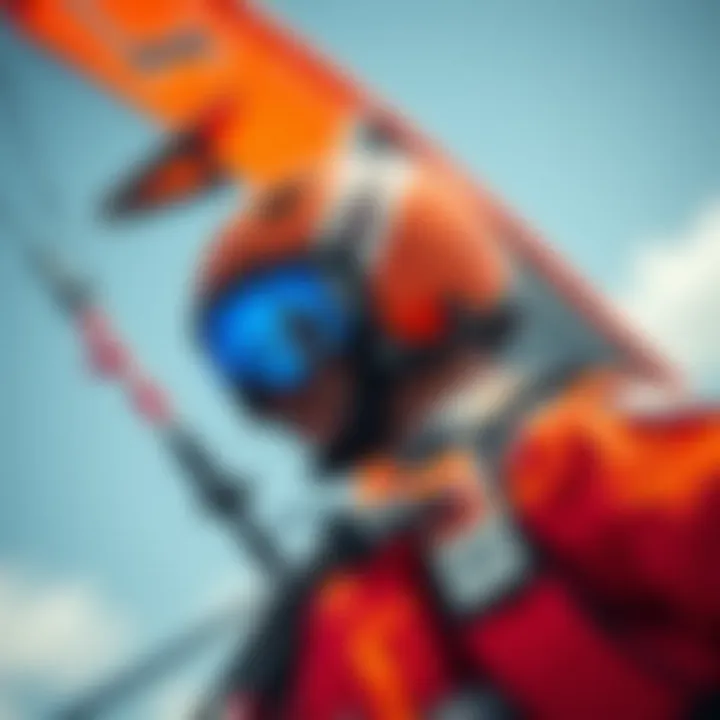
"Investing in proper safety gear is not just smart; it's an essential part of being a responsible kiteboarder."
Best Practices for Safe Riding
Alongside the gear you wear, applying the right riding techniques contributes significantly to your safety. Here’s a compilation of best practices:
- Know Your Limits: Understand your skill level and conditions. Don’t bite off more than you can chew, especially as a beginner.
- Pre-Session Checks: Before hitting the water, ensure all your equipment is in working order. Pay attention to straps, clips, and the kite itself. A quick inspection can prevent accidents.
- Stay Aware of Your Surroundings: Keep an eye on other riders, boats, and potential obstacles in your path. Choosing a less crowded area can help reduce the risk of collisions.
- Practice Rescue Techniques: Knowing how to self-rescue can be a lifesaver. If you find yourself in trouble, being able to navigate back to safety under pressure is vital.
- Have a Spotter: If possible, ride with a partner or have someone on land watching out for you. In case something goes awry, having another pair of eyes can make a world of difference.
- Adjust Riding Style per Weather Conditions: Be adaptive. High winds can drastically alter the way your board rides. Understanding how to adjust your kite positioning is key here.
Taking these safety considerations to heart makes your kiteboarding experience more enjoyable and far less dangerous. With the right gear and best practices in place, you can focus on the thrill of riding the waves.
The Future of Wing Boards in Kiteboarding
Wing boards have come a long way since their emergence in the kiteboarding scene, but the future holds even more promise for both enthusiasts and novices. By delving into the potential technological advancements and new riding techniques, we can better understand what lies ahead for this exciting domain. As kiteboarding continues to gain traction in adventure sports, the importance of understanding the evolution of wing boards becomes essential.
Technological Advancements on the Horizon
The rapid evolution of materials and technology in water sports gives a clear glimpse into the future of wing boards. Notably, materials like carbon fiber and high-density foam are paving the way for lighter, stiffer, and more buoyant boards. These advancements mean that riders can experience improved performance, better control, and enhanced durability.
But it's not just about the physical materials. Innovations in aerodynamic design will also play a crucial role. Enhanced wing shapes and profiles could lead to increased lift, reducing the effort required to catch air and allowing for more dynamic riding styles. Imagine a wing board that can adapt its profile while in motion, optimizing for speed, stability, or agility. This adaptive technology is not far from reality.
- Smart Features: The potential integration of sensors and real-time feedback mechanisms can revolutionize the learning process for newcomers. Imagine wearing a helmet that provides instant feedback about your technique, helping you correct your stance or adjust your speed.
- Eco-Friendly Designs: As awareness about sustainability grows, manufacturers may shift towards eco-friendly materials and production methods. This could mean biodegradable boards or those manufactured with minimal impact on the environment.
Potential for New Kiteboarding Techniques
With the continuous advancement in the design and functionality of wing boards, it's likely that we'll witness new kiteboarding techniques that elevate the sport to another level. One potential area of growth is in the blending of disciplines. As wing boards become more versatile, we might see techniques influenced by windsurfing or even paddleboarding. Riders may incorporate movement styles from these sports, creating a unique hybrid riding experience.
Imagine a maneuver that combines the agility of kitesurfing with the stability of a paddleboard, opening up new pathways for creativity on the water.
- Freestyle Innovations: New tricks could emerge, based on the unique attributes of wing boards. The addition of softer edges may allow for gentler landings, thus enabling riders to explore daring aerial maneuvers without fear of heavy impact.
- Riding in Varied Conditions: As the design of wing boards continues to evolve, riders could easily transition between different wind conditions and water states, enhancing their ability to perform in a variety of environments—from flat water to choppy ocean waves.
It’s clear that the next steps for wing boards in kiteboarding promise to be filled with curiosity and excitement. Technology and innovation will shape the rider's experience, enhancing how they interact with the ocean and the wind. Embracing these changes is crucial for anyone looking to up their game in this sport.
"Innovation is what drives progress. In the world of kiteboarding, this means not only enhancing performance but also creating an experience that resonates deeper with the rider."
As we set our sails towards the future, the potential for wing boards in kiteboarding looks brighter than ever. Let's keep an eye on the horizon!
Ending
Wrapping things up on the topic of wing boards in kiteboarding highlights some significant aspects that both enthusiasts and newcomers should pay close attention to. Understanding the evolution, mechanics, advantages, as well as the challenges of wing boards is crucial for any kiteboarder aiming to enhance their experience.
Summarizing Key Insights
It's clear that wing boards have revolutionized the world of kiteboarding. Here are some key points to remember:
- Evolution: Wing boards originated from advancements in kite design, providing a fresh approach to riding the waves compared to traditional boards. It's fascinating to see how innovation has shaped this sport over time.
- Performance: The mechanics of wing boards offer unique handling characteristics. Riders enjoy a blend of speed and agility that makes the experience thrilling, particularly in diverse weather conditions.
- Versatility: Wing boards can adapt to various styles, making them suitable for both relaxed cruising and high-performance maneuvers. Their compatibility with different board types allows for a flexible riding experience.
- Challenges: While the benefits are compelling, it’s important to recognize the formidable learning curve and physical demands associated with wing boarding. Additionally, staying attuned to weather patterns will keep paddlers safer and more successful on the water.
In short, the journey with wing boards is rich with potential, yet demands a sound understanding of the equipment and environmental factors.
Encouragement to Explore Wing Board Options
For those considering diving into the realm of wing boards, there's no time like the present. Whether you're an experienced kiteboarder or a curious newcomer, exploring these boards can add an exciting layer to your water adventures. Start by visiting local rental shops or demo days to get a feel for different models and styles. Join community forums online like Reddit to connect with others who share your interest.
Engaging with fellow kiteboarders can provide insight on the best practices and experiences, paving the way for a smoother transition into wing boarding. Remember, the excitement lies in mastering new skills and enjoying the thrill that comes with it. The world of kiteboarding awaits, so grab a wing board and let the wind be your guide!



